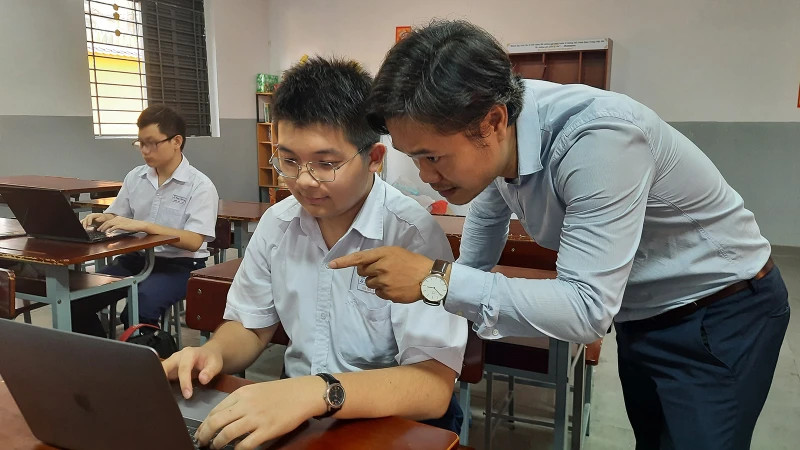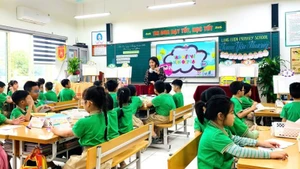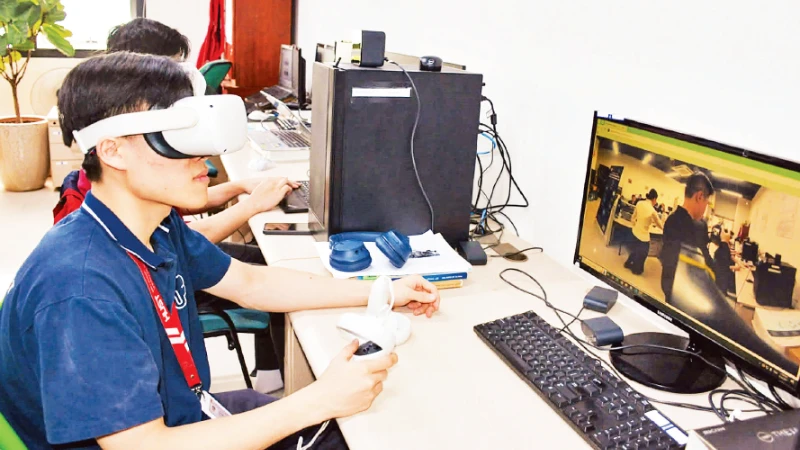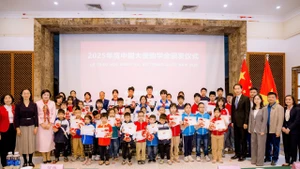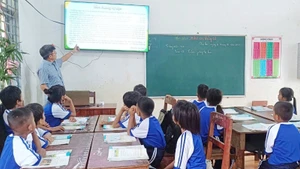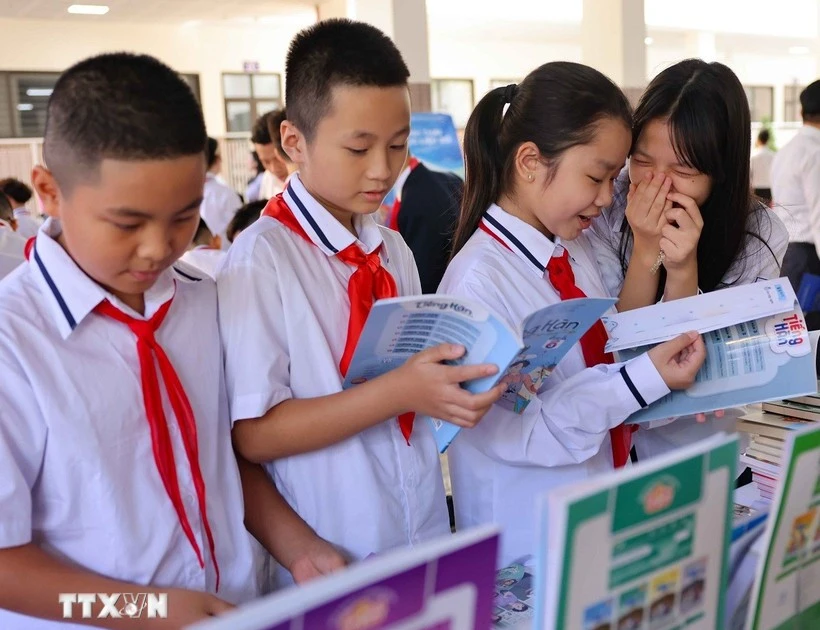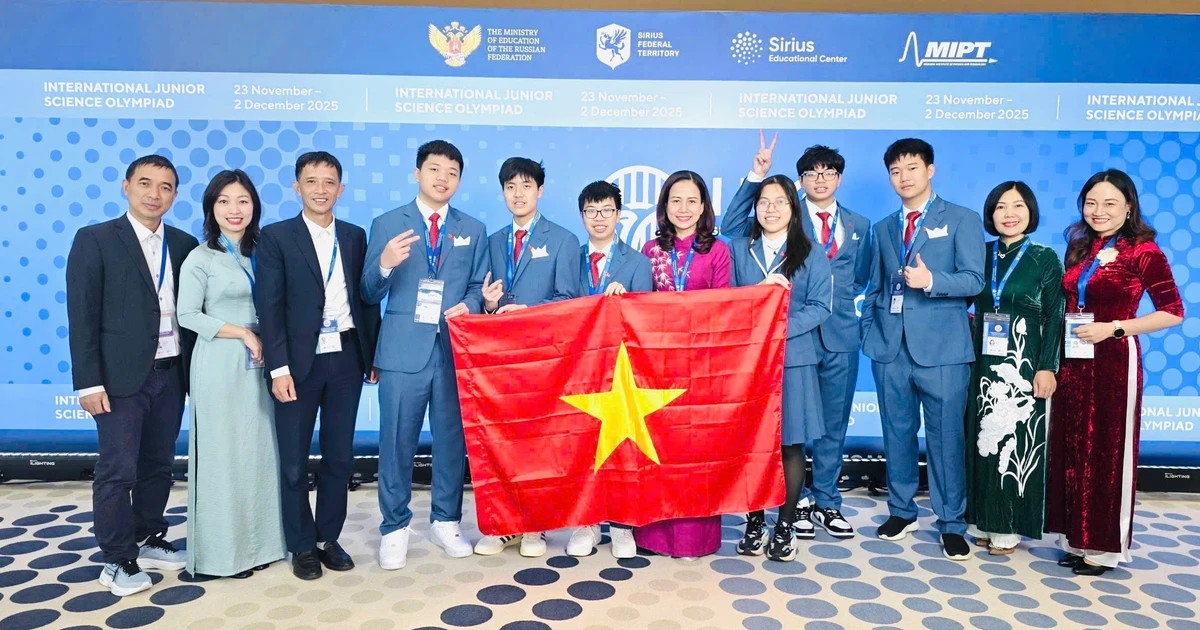In recent years, the education and training sector of District 3, Ho Chi Minh City has promoted the application of AI in teaching, testing and assessment activities, as well as school management activities. This implementation not only helps the education sector of District 3 innovate management activities, but also improves the quality of teaching and learning.
Specifically, from the 2022-2023 school year, District 3 has deployed online enrollment for primary schools to all preschools in the area. In the 2024-2025 school year, the district has deployed a new utility, which is to integrate the GPT Chat function to answer questions from parents and provide automatic guidance so that parents can easily find information about the enrollment plan.
According to Pham Dang Khoa, Head of the Department of Education and Training of District 3, all kindergartens, primary schools, and secondary schools in the area have implemented online enrollment.
The application of information technology in enrollment has contributed to ensuring fairness, accuracy, objectivity, transparency, and creating the most favorable conditions for parents and students.
 |
| Students experience at the STEAMZone Centre at Quang Trung Software Park, Ho Chi Minh City (Photo: CAO TAN) |
After a year of testing in three localities (Thu Duc City, District 8, Tan Binh District), in the 2024-2025 school year, the Ho Chi Minh City Department of Education and Training applied the Geographic Information System (GIS) to support primary school enrollment for all districts, towns, and Thu Duc City.
Accordingly, the entire enrollment and admission process is carried out entirely online. The advantage of applying GIS maps in primary school enrollment is that it helps parents choose schools near their homes (inter-ward and inter-district schools).
After parents register, based on the actual residence of the student, with the help of GIS maps, the local enrollment steering committee will arrange the closest school for the child, instead of assigning students in which ward to enroll in the school in that area as in previous years.
In particular, through combining GIS maps with enrollment data, it will greatly support the planning of school construction and support education policy makers to have a complete view of the distribution of population and schools, thereby making policies suitable to the actual situation in each region.
In the context of the current explosion of 4.0 technology, AI is opening up huge opportunities for education, helping to optimise the learning process, personalise the curriculum and improve education management.
Teacher Le Thi Thien My, Nguyen Van Cu High School, Hoc Mon District, said: Under the influence of AI, education is undergoing profound changes, opening a new era in teaching and learning methods.
AI is not only a teaching support tool, but also plays an important role in reshaping educational methods, bringing unprecedented benefits. One of the biggest advantages of AI is the ability to personalise education, a potential direction to help students acquire knowledge more effectively, while also helping to improve the effectiveness of educational management.
Modern AI applications can automate many school administrative tasks, from managing scores, monitoring learning progress, to communicating with parents. With technologies such as distance learning and online classrooms, students are no longer limited by geographical distance, helping to maintain an effective learning environment even without the direct presence of teachers.
Applications such as Chatbots, virtual assistants and smart learning systems provide knowledge 24/7, ready to answer students' questions and suggest learning paths whenever necessary.
With more than 1.7 million students, Ho Chi Minh City has the second largest number of students in the country, after Hanoi. This leads to the urgent need to deploy solutions to improve quality as well as efficiency in management as the locality aims to build an advanced, modern education system on par with the region and the world in the coming time.
Nguyen Bao Quoc, Deputy Director of the Department of Education and Training of Ho Chi Minh City said: Recognising the potential of AI in solving educational challenges, the Department of Education and Training has set a goal of deploying AI solutions across the entire education sector.
Of which, there are two AI solutions piloted by the Department: the Self-adjustment Learning Path Support Model and the Knowledge Content Prediction Model for Training Recommendations. These two innovative solutions were developed by the Ho Chi Minh City Department of Education and Training, utilising existing data sources and infrastructure to improve educational outcomes.
For the Self-adjustment Learning Path Support Model, this AI model aims to support students in self-adjusting their learning paths. By analysing student interactions on the LMS (Learning Management System), the model makes recommendations for each student, such as areas to focus on improving, additional materials or activities, adjusting the student's learning schedule, and strategies to improve learning efficiency.
As for the Knowledge Content Prediction model for training recommendations, through analysing historical data from student competency surveys and question banks, the model can help teachers know the content that students have difficulty with. Thereby, teachers can plan additional teaching programmes to supplement students' knowledge.
According to Nguyen Bao Quoc, the pilot AI solutions of the Ho Chi Minh City Department of Education and Training are significant steps towards integrating AI into the education sector. By focusing on models that support personalised learning paths and predictive analysis of knowledge content that students need to supplement, AI technology can support a large number of teachers and students in optimising and personalising their learning paths, thereby improving the quality of education in the sector on a large scale.
